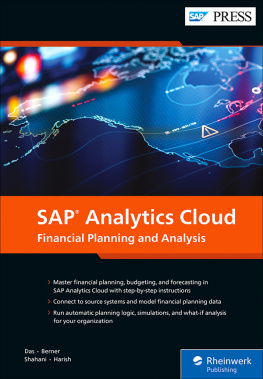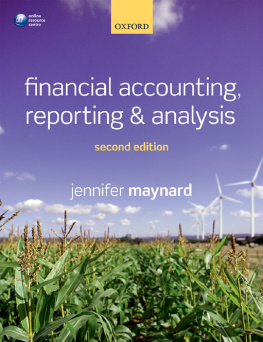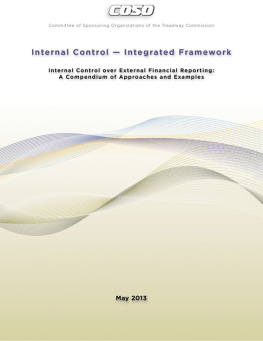The right of Laura Girella to be identified as author of this work has been asserted by her in accordance with sections 77 and 78 of the Copyright, Designs and Patents Act 1988.
All rights reserved. No part of this book may be reprinted or reproduced or utilised in any form or by any electronic, mechanical, or other means, now known or hereafter invented, including photocopying and recording, or in any information storage or retrieval system, without permission in writing from the publishers.
Apparently, the topic of boundaries applied to reporting is old-fashioned and remote from the current research interests of academia at an international level. However, on a closer look, this topic is directly or indirectly at the very heart of many debates regarding the shape and content of present-day practice and standardization of accounting, such as the scope of financial and non-financial accountability, the edges of the value creation process, the impact of the supply chain, and users information needs.
Defining boundaries means outlining the margins of that special representation called corporate reporting, identifying some of its fundamental measures and information, and revealing the level of response to external expectations as to disclosure. In short, boundaries characterise in an essential way, and indeed are consubstantial with, the object to be reported upon. In fact, setting the boundaries of reporting contributes to the determination of those in the organisation, to the clarification of what is in and what is out, and thus has an effect on the real world in terms of evidencing responsibilities and the fulfilment of the diverse stakeholders requests.
The topic of boundaries is therefore central to the construction of accounts and reports. On the other hand, it should not be forgotten that the latter are artifacts of the human mind, and hence they reflect the conceptualization of the object made over time by the professional, the regulator, or the theoretician.
In this sense, financial accounting is based on boundaries that over the course of time have shown a strong evolution, conditioning the numbers that compose statements, their classification and the very calculation of surplus and its nature. Examples of this evolution are, for instance, the disputes in consolidated accounts over the role and measurement of non-controlling (or minority) interests, the possible exclusion of subsidiaries with dissimilar activities or located abroad, the elimination of intercompany revenues, expenses and profits/losses, the calculation and disclosure of the so-called full goodwill; and, for individual company accounts, the proposals regarding the treatment of dividends distributed (Li, Staubus) or the cost of capital (Anthony) as explicit expenses.
Indeed, boundaries are even more relevant today. Whilst, until 20 years or so ago, accounts were only financial in nature, in more recent times the diversification of expectations on and around corporate organisations has favored the preparation of several innovative types of accounts and reporting. Intellectual capital and intangible capital statements; social, environmental and sustainability reports; and, more recently, integrated reports have become more widespread internationally and sometimes have even entered legislation (cf. European Directive no. 95/2014). This variety of accountability forms, which can be concisely referred to as non-financial reporting, has exacerbated the necessity of understanding and possibly establishing boundaries that are consistent with the aims of the diverse reports and the responsibilities of organisations. Up to which points should direct and indirect gas emissions, impacts on territories and populations, influences on climate, effects on value chains and modifications of intangible capitals be reported?
This significant work by Laura Girella explores in a critical and comprehensive way the topic of boundaries in corporate reporting. Far from being old stuff (Zeff, 2005), the present examination of the role of boundaries in both financial and non-financial reporting provides an original and in-depth analysis, which contributes to a better appreciation and framing of an important issue that has implications for several burning questions of current reporting practice, standardization and, ultimately, conceptualization (e.g., reporting entity, notion of value, non-controlling interests, principles of materiality and comparability, conceptual framework). The comparative perspective adopted between the financial and non-financial realms is also insightful and thought-provoking, and it demonstrates that the path ahead to strengthening corporate reporting is still long.
After all, if setting boundaries is constitutive of reporting, then the aims and the usefulness of corporate financial and non-financial information is genetically affected by the boundaries of the reporting entity as perceived and identified by the actors involved in the process.
Prof. Stefano Zambon (PhD, LSE)
University of Ferrara, Italy
Bibliography
Zeff, S. A. (2005), The entity theory of recording goodwill in business combinations: Old stuff, CPA Journal , 75(10).
Note: Page numbers in italic indicate a figure, and page numbers in bold indicate a table on the corresponding page.
AAA see
A4S see
Accountants International Study Group
Accounting for Sustainability (A4S) Project
Accounting Research Bulletin (ARB) no.
acquisition date, fair value as of
American Accounting Association (AAA)
ARB see
Arbeitkreis Wissensbilanz
auditor, reporting boundary and
azienda (business entity)
borrowing: boundaries
boundaries/boundary: assessment
boundary transplantation, concept of
boundary work
BT, reporting boundary
Business Economics
Canadian Institute of Chartered Accountants
Caterpillar, COSA of
CCRF see
CDSB see
CERES see
Climate Change Reporting Framework (CCRF)
Climate Disclosure Standards Board (CDSB)
Coalition for Environmentally Responsible Economies (CERES)
company financial reporting
control: concept of
Corporate Reporting Dialogue (CRD)
COSA, business unit of Caterpillar
CRD see
creolisation
CSR see
Economia Aziendale
economics: accounting
Energie Baden-Wurttemberg AG (EnBW)
Enron
enterprise/institutional theory, of financial reporting
entity view of financial reporting
EU Directive no. 95/2014 on Non-Financial and Diversity Information
EU Non-Financial Reporting Directive (2014)
expansion
FAS see
FASB see
FASB of the Interpretation (FIN) No. 46R
Financial Accounting Standard (FAS)







